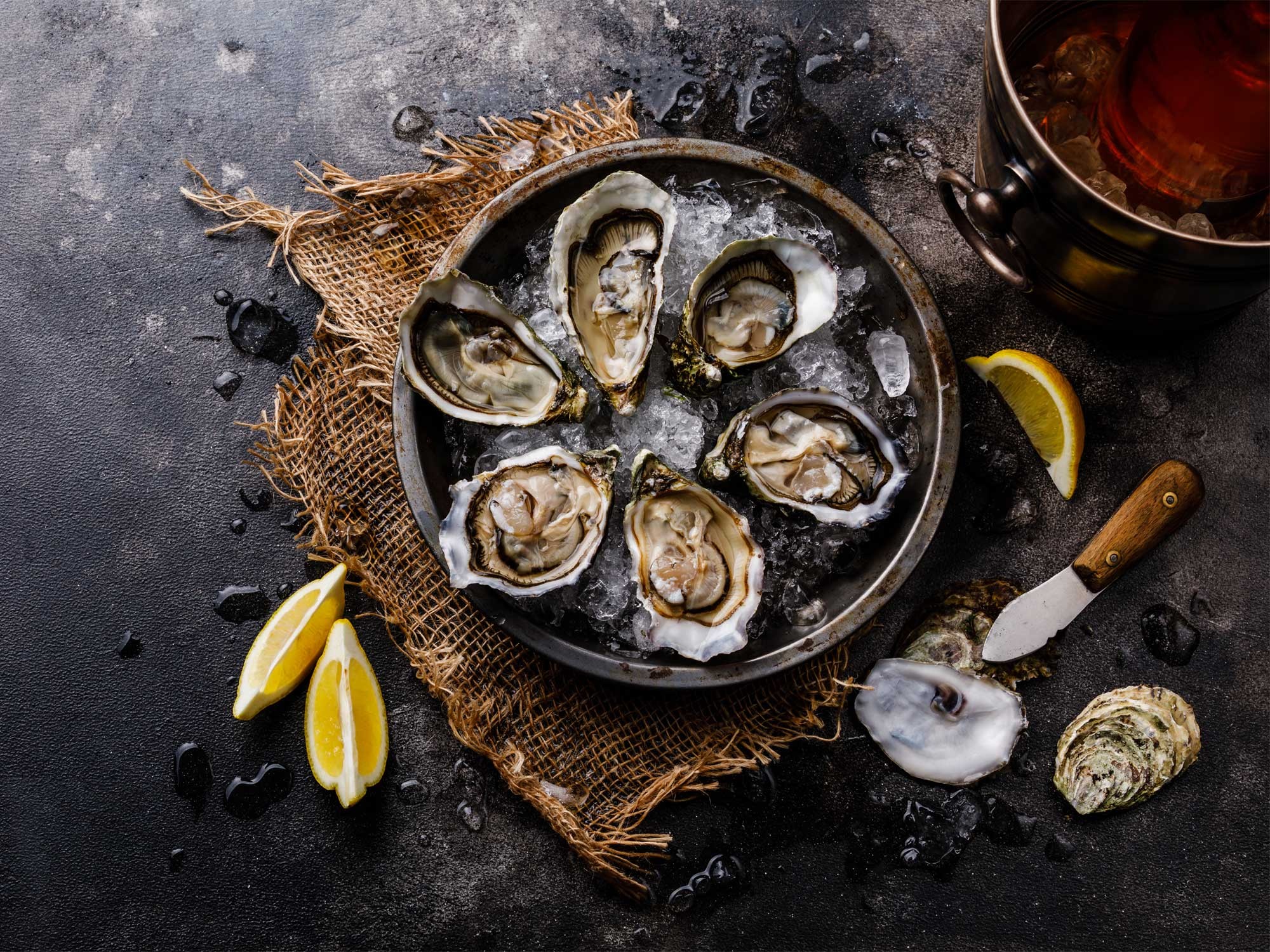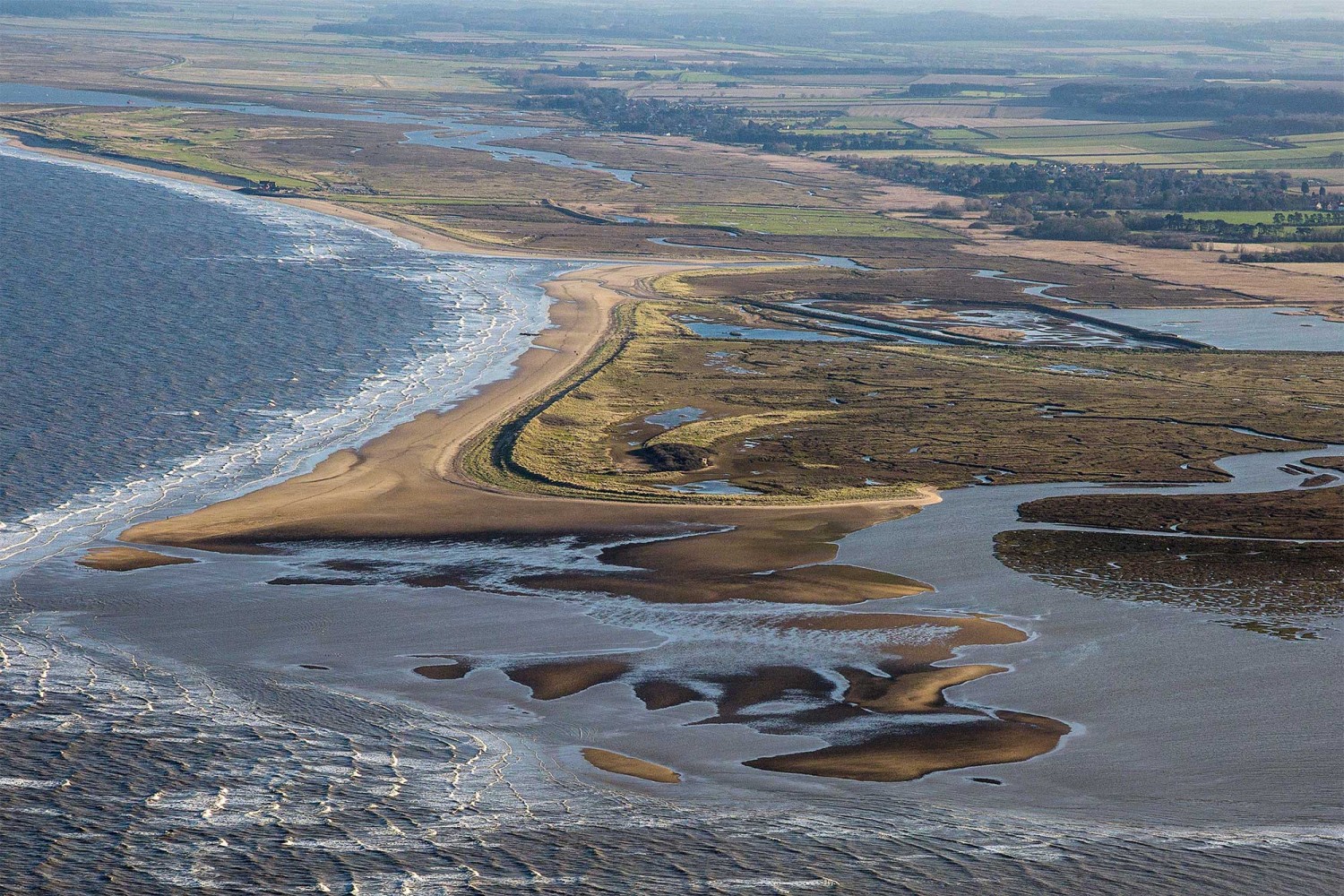
Welcome to Brancaster and the food of love...
Exported to Italy direct from Norfolk, Roman Emperors paid for oysters by their weight in gold. We're celebrating the food of love – and why Brancaster’s oysters are so sought-after
The month of romance brings with it the food of love. Oysters are in season during February, and when the 14th of the month comes around couples across the world will be sharing oysters – with the perfect accompaniment of champagne. The North Norfolk coastline is famous for producing this very special shellfish, particularly in the pure waters of Brancaster Staithe.
The word ‘oyster’ is used as a common name for a number of different families of saltwater clams which live in marine or brackish habitats and their rough, irregular shells make them distinctive. The first people to exploit the British oyster were the Romans – they were farming them in Norfolk almost two millennia ago! The practice flourished at Brancaster Staithe until around 1900, and both native and pacific oysters were reintroduced into the waters thirty years ago.
Now considered a luxurious delicacy, oysters were once plentiful. Evidence of consumption goes back to prehistory and in the 19th century oysters were so abundant and cheap they were the food of the poor. Overfishing and pressure from diseases and pollution have sharply reduced supplies.
The English coastline is one of the best in the world to find and eat oysters – scattered with shallow bays awash with cold waters, our seaboard is perfect for oyster beds of both the natural and farmed variety.
Brancaster is no exception; the fishermen of Brancaster Staithe are out on the marshes each and every day come rain or shine, working hard to make sure their produce is of the highest quality it possibly can be. Oysters from this area are classified among the best in Europe and are set at a grade A. This means the waters are so pure the oysters can be sold direct from the sea without any need to do anything more to them.
Oyster farming or cultivating is an aquaculture practice in which oysters are raised for humans to consume. They are bought in as ‘seed’ when they are around the size of a fingernail – a few millimetres across – and are then suspended in baskets just below the water’s surface. They grow extremely healthily in North Norfolk due to the purity of the water, although it can take up to two years for the oysters to be ready to harvest.

Cyril Southerland is a registered shellfish merchant in Brancaster Staithe and has 35 years’ experience cultivating oysters, and explains how oysters feed off the water and plant life in the marshes.
“Each oyster filters around eight gallons a day,” he says. “They open about a quarter of an inch and feed on quality water which is when they fatten up.”
Natural harvesting is done by simply gathering the oysters from their beds. In very shallow waters they can be gathered by hand or with small rakes, but in deeper water oyster tongs or longer handled rakes are required to reach the beds.
Commonly known as a food of romance, oysters are often eaten on Valentine’s Day or anniversaries. The Italian adventurer and author Casanova played a big part in giving this shellfish its reputation as an aphrodisiac – the famous 18th century lover is said to have eaten fifty oysters a day for his breakfast!
This amorous effect is no longer an old wives’ tale, however, as scientific research has shown that raw oysters are high in zinc (which raises testosterone) and are also rich in rare amino acids that trigger high levels of hormones. Scientists also say that spring is the time of year in which oysters have their greatest aphrodisiac effects.
Not only are oysters considered a luxurious treat, they are actually good for you too – rich in iron and calcium as well as Vitamin A and B12, a dozen oysters will only set you back 110 calories!
Unlike the majority of shellfish you’ll come across, oysters have a surprisingly long shelf life. They can last up to four weeks stored in the correct way, although, the longer they age the less pleasant they will taste.
In order for them to be eaten safely, oysters must be eaten or cooked alive and the shells are normally closed tightly or snap shut with a slight tap. If the shell is open before you go to cook it, the oyster is dead and therefore isn’t safe to eat.
Opening an oyster is known as oyster shucking, and it’s an art form in itself that requires a certain skill. The best method is to use a special knife with a short and thick blade around 5cm long.
Purists would consider a beautiful Brancaster Staithe oyster to be delicious enough to eat raw with no dressing, bar some lemon juice or a splash of vinegar. But some restaurants cook or serve their oysters with a Mignonette sauce, made with chopped shallots, mixed peppercorns, dry white wine and a dash of lemon juice.
Despite everything that can be done when preparing an oyster, eating them is as simple as opening the shell and eating the contents.
Many pubs and restaurants along the beautiful North Norfolk coastline have Brancaster’s fresh shellfish on their menus for you to enjoy. Give oysters a go this month – the food of love is right on our doorstep.
